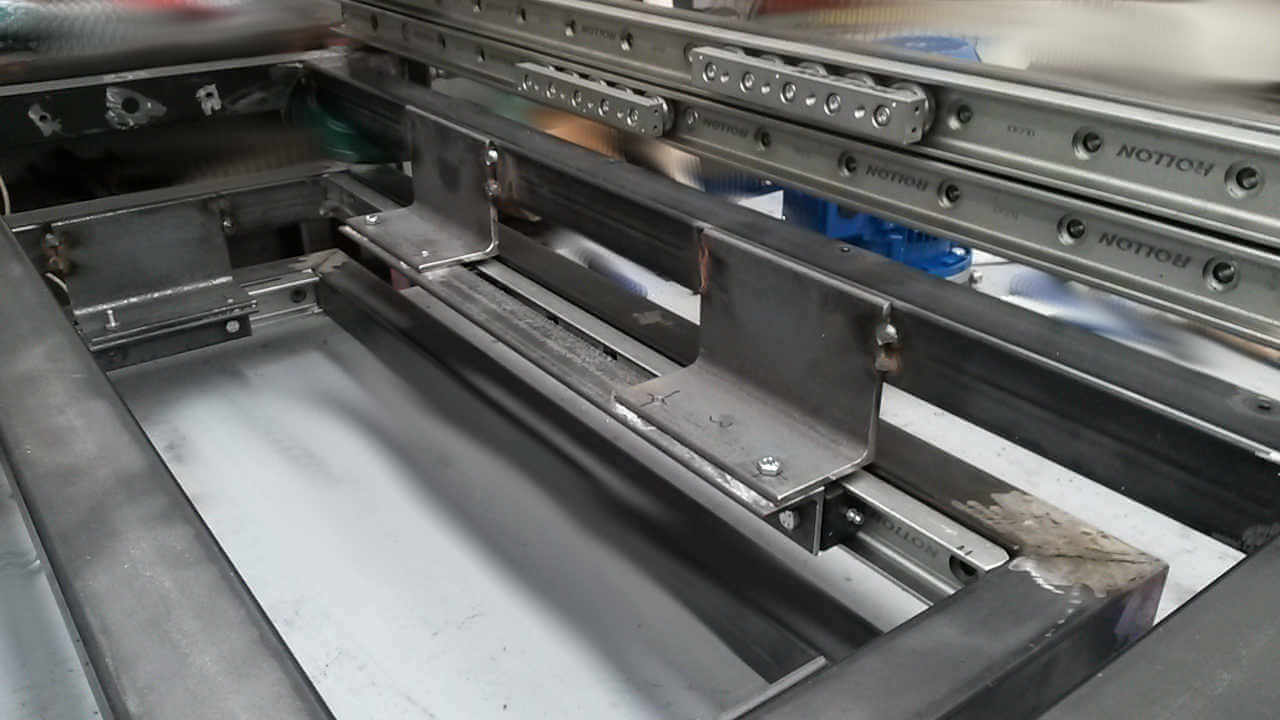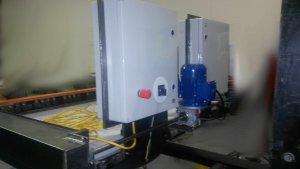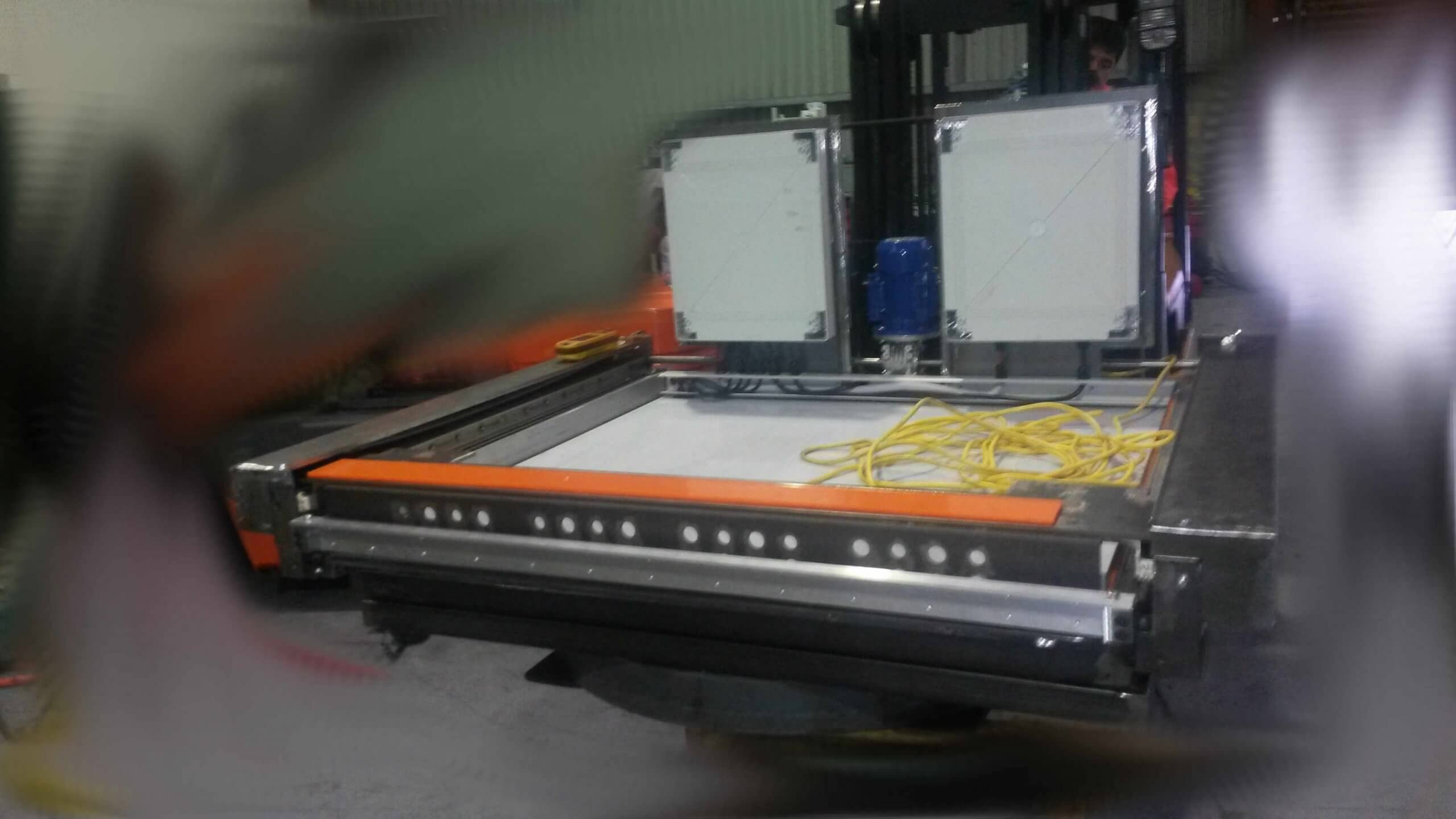
CASE STUDY RT EQUIPMENT
We had a customer ask for our help on a project with a few unusual requirements. The machine had to be compact in size, easily transported and operated from a forklift. An initial design had been laid out but many of the components were pricey and on a long lead time. Integration was also a problem as the operator needed to use multiple, physically disconnect machines with a single wireless remote control. It was also desirable to run the machine on 24V DC and 240V AC.
Compact rail was selected as the guidance for its ease of mounting to a welded frame. In discussions with the customer a multi roller slider was used which was able to handle some modest pitching loads but in a compact size. These were standard stocked items.
Our recommendation was that the initial design using screw jacks be changed to a twin belt drive. The belt drive on each side of the mechanism kept the centre clear and eliminated racking. It was also easily mechanically synchronised with a centrally mounted motor and worm box with half shafts to each side of the machine. This also allowed the motor to be mounted vertically at one end of the mechanism further saving space.

The initial brief had a DC motor to suit the 24V requirement. We suggested using a standard AC induction motor, VSD and a 24V to 240V inverter. This meant an advanced Yaskawa VSD could be used with configurable acceleration and deceleration times (ramps), S curve (jerk) and torque control. This feature set reduced potential pitching problems with the payload and gave the required clutch functionality. These were also stock items.
In operation fine positioning adjustment was also required in two directions. This was achieved using additional compact rail driven by Rollco actuators. The robust construction and integrated clutch were ideal as accidental collision during use could not be eliminated.
Just to further complicate matters the entire mechanism needed to rotate 90 degrees in either direction. After looking at a large diameter bearing and or plastic ring options the customer cleverly used a central thrust bearing with the additional support of ball transfer units mounted at edges of the ring. The mechanism is free running, easily turned by hand and can be locked in place with a spring plunger.
To allow for the multiple voltage requirements the customer was able to use a single selector switch. In 240V input the VSD was directly powered and a 24V power supply was used for the actuators and controller. In 24V mode the actuators and controller were powered directly and the VSD driven from an inverter.
The controller requirements initially seemed very challenging. On closer inspection the feature set of the Yotta control A-52 system was ideal. The robust Wifi remote had enough buttons for the required functionality and an extended I/O module configured for the required number of outputs. To control the additional physically separate machine an additional controller was configured as a slave this allowed the remote to control both machines simultaneously.

 Contact Us
Contact Us